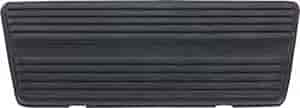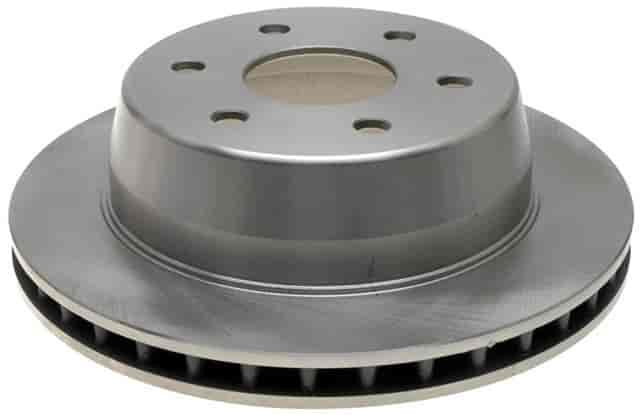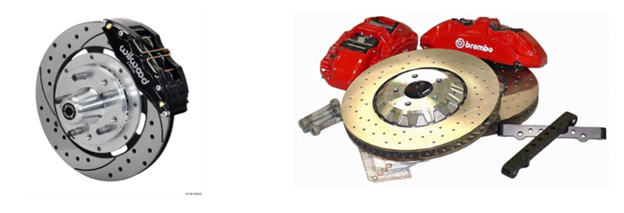Sign up now to join the JEGS email newsletter and be the first to learn about new products, special deals and e-mail only offers!

Welcome to our comprehensive guide detailing everything you need to know about brake rotor thickness. Some of the topics we'll cover include what rotor thickness is, why it matters, what symptoms suggest thinning, how to measure this parameter yourself, and more.
Equipped with this knowledge, you can ensure your vehicle's brakes always perform their best, keeping you, your passengers, and other drivers as safe as possible.
Ready to get started? Let's dive in.
Before you can fully understand rotor thickness, you must know the answer to “what are brake rotors?”
Rotors are located within the wheel assembly and are essentially circular discs that work with the brake pads and brake calipers to bring your vehicle to a halt. Simply put, when you engage the brakes, the pads grip onto the rotors via hydraulic pressure from the brake caliper piston, generating friction that slows the wheel's rotation.
Most brake rotors start with a thickness or width of between 10 - 30 mm, also known as its "nominal thickness." The "minimum thickness" or "minimum discard thickness" refers to how thin a rotor can be before it's considered dangerous. You can typically find this information engraved on the side of the rotor (more on this later) as well on the manufacturer brake rotor thickness chart.
Over time, this friction-induced contact causes wear and tear, gradually reducing the rotor's thickness, which is crucial for safe and effective braking performance.
Now that we've covered what rotor thickness is, let's explore why it's so important for your vehicle and its braking system.
First off, thin rotors are less capable of absorbing and dissipating the heat generated from braking, which basically means they heat up quicker and get hotter. If the heat becomes too much and is not properly dissipated, it can cause brake fade, an issue that can impact braking performance and expedite wear and tear. During brake fade, when the brakes are pressed, they do not slow the vehicle down as quickly. You will experience the vehicle continuing to roll even while you are pushing hard on the brake pedal, with the distance and time needed to stop being much longer. If you are too close behind someone, this will result in an accident.
Thin rotors are also more susceptible to cracking or breaking, especially in high-stress situations (e.g., emergency stops, pulling heavy loads, etc.). The reduced material in thin rotors cannot endure extreme forces, increasing the risk of brake failure—a potentially catastrophic issue.
Additionally, thin rotors are more likely to experience warping, a condition where the rotor becomes uneven. Warped rotors can lead to inconsistent contact between the brake pads and rotors, causing an unsettling vibration when braking and further compromising the vehicle's stopping ability.

Sign up now to join the JEGS email newsletter and be the first to learn about new products, special deals and e-mail only offers!

Now that you better understand the importance of rotor thickness, let’s review how to tell if your rotors are bad. By recognizing these signs early, you can address the cause before it impacts your vehicle’s braking performance.
Here are some common symptoms associated with thinning rotors:
Just note that there are multiple possible causes for the above symptoms, so before you go hastily replacing your rotors, you should first measure their thickness to confirm, a process we’ll cover in the next section.

Generally, most brake rotors last around 50,000-70,000 miles before needing replacement. To ensure your brakes are always performing their best, most experts recommend checking the thickness of your rotors (and pads while you’re at it) every 10,000-25,000 miles.
To check the thickness of your rotors, you'll need the following tools:
Using these tools, follow the below steps to learn how to tell if your brake rotors are bad:
Maintaining your rotors not only ensures your brakes always perform at their best, but it's also a key part of being a responsible vehicle owner. When it's time to replace or upgrade your rotors, consider JEGS, a leading supplier of automotive parts and accessories.
Feel free to browse our extensive selection of products (including brake rotors) and have your order sent straight to your door. Still have questions? Contact our team today.





Leave a Reply